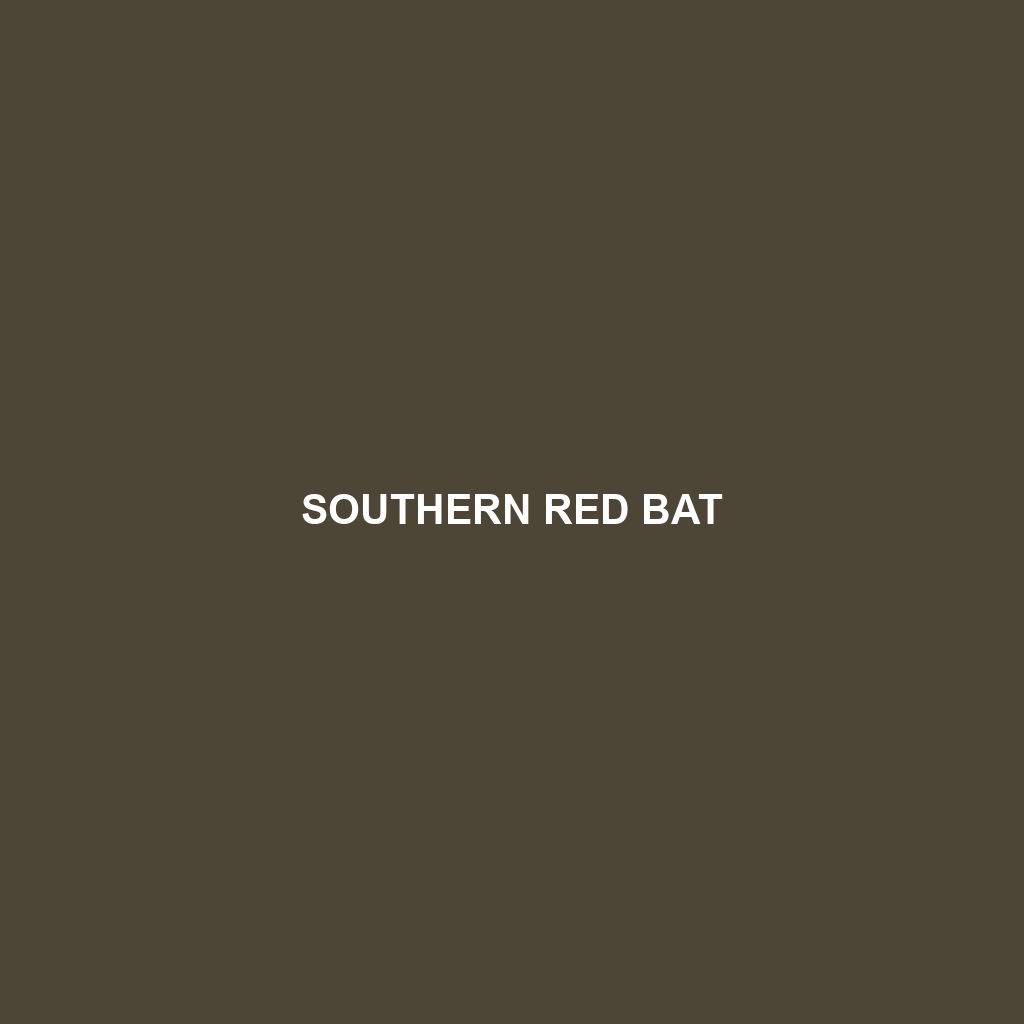Southern Red Bat (Lasiurus borealis)
Common Name: Southern Red Bat
Scientific Name: Lasiurus borealis
Habitat
The Southern Red Bat is primarily found in the eastern United States, ranging from southern New England down to Florida and westward to Texas. These bats thrive in a variety of environments, including deciduous forests, suburban areas, and open woodlands. They are often discovered roosting in trees, particularly in areas with dense foliage, which provides essential cover from predators and harsh weather conditions.
Physical Characteristics
Southern Red Bats are medium-sized bats, measuring about 3 to 4 inches in body length with a wingspan of approximately 12 to 13 inches. They are characterized by their striking reddish-brown fur, which is particularly vibrant in males. Their fur appears fluffy and is longer than that of many other bat species, contributing to their unique appearance. One of their distinctive features is the white-tipped fur on their ears and face, which contrasts with their overall reddish coloration.
Behavior
These bats are nocturnal and are known for their agile flying abilities. Southern Red Bats typically forage alone during the night, catching insects mid-air with incredible precision. They exhibit a unique roosting behavior, often hanging upside down in foliage or camouflaging themselves against tree bark, which makes them harder to spot. During colder months, they are known to migrate to warmer areas to escape harsh winter temperatures.
Diet
The Southern Red Bat is an insectivore, primarily feeding on moths, beetles, and other flying insects. Their diet plays a crucial role in controlling insect populations, making them an important part of their ecosystem. They hunt using echolocation, allowing them to navigate through their environment and locate prey even in complete darkness.
Reproduction
Southern Red Bats typically breed in late summer, with a gestation period of about 40 days. Females usually give birth to one to three pups, which are born hairless and helpless. Mothers are known to care for their young until they are capable of independent flight and foraging. The pups typically venture out of the roost with their mothers after a few weeks.
Conservation Status
Currently, the Southern Red Bat is classified as a species of “Least Concern” by the International Union for Conservation of Nature (IUCN). However, they face threats from habitat loss, pesticides affecting their prey, and climate change. As such, ongoing efforts to monitor their populations and preserve their habitats are essential.
Interesting Facts
One fascinating fact about the Southern Red Bat is its ability to camouflage within the leaves and branches of trees, allowing it to avoid predation from larger birds and mammals. Additionally, these bats can be quite vocal during mating seasons, producing various sounds to attract potential mates.
Role in Ecosystem
The Southern Red Bat plays a vital role in its ecosystem as a natural pest controller, helping to maintain the balance of insect populations in their habitats. They also serve as prey for various predators, contributing to the food chain. Their presence indicates healthy environments, making them important indicators of biodiversity in forested areas.
